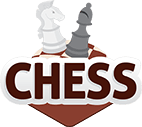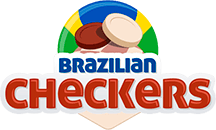Description:
Backgammon is a game for two players, played on a board consisting of twenty-four narrow triangles called points or pips. The triangles alternate in color and are grouped into four quadrants of six triangles each. The quadrants are referred to as a player's home board and outer board, and the opponent's home board and outer board. The home and outer boards are separated from each other by a ridge down the center of the board called the bar. Each player uses 15 either dark or light colored pieces (checkers) as well as 2 six sided dice to make his/her movements.•Players: 2;
Equipment:
• Checkers: 15 dark colored pieces and 15 light colored pieces•Board: 24 narrow triangles called points/pips. The triangles alternate in color and are grouped into 4 quadrants of 6 triangles each.;
•Object of the game: The player is supposed to bear off his/her checkers from the board before his/her opponent.
The Game
Choosing the first one to play
To start the game, each player throws a single die. This determines both the player to go first and the numbers to be played. If equal numbers come up, then both players roll again until they roll different numbers. The player throwing the higher number now moves his checkers according to the numbers showing on both dice. After the first roll, the players throw two dice and alternate turns.
For instance: Player A throws a die and gets a 5. Player B throws a die and gets a 5 too (the numbers are doubled then); Player A throws a die again and now gets a 4; Player B throws a die and gets a 6; Player B will then be the first to play using number 4 (number of Player A's die) and 6 (number of Player B's die)
Movement of the Checkers:
After settling who's the first to play, each player, in his/her own turn, must roll both dice and play the numbers by moving his/her checkers.
One player is supposed to move his/her checkers in the clockwise direction and the other player, in the counterclockwise direction.If a player isn't able to make legal moves using the numbers he/she got from the dice, he/she must then pass his/her turn.
Checkers must never be moved to pips on which there are already 2 or more opposing checkers. If the player wishes to move his/her checker to a pip on which there's only 1 opposing checker, it is then hit, born off and placed on the bar.
When a player has 1 or more hit checkers, he/she must then move his/her remaining checkers aiming only at retrieving the ones on the bar and place them back on a pip, but always bearing in mind that the pip can't be occupied by more than 1 opposing checker.
If a player gets equal numbers on both dice, he/she has the right to play 4 turns using the dice numbers instead of the 2 regular turns.
Bearing Off
A player can only start bearing his/her checkers off when all of them are in the home board. In order to bear a checker off, a player must roll a number equivalent to the amount of remaining pips. If a player rolls a number higher than that which his/her most distant checkers need, he/she then must bear those checkers off. For instance, if the most distant checkers need a 4 in order to be born off and the player gets a 6, he/she is allowed to bear any of those checkers off.
Winning
The winner is the player who first gets to bear all his/her checkers off.
Learn how to play other Traditional Board Games
Amplify your knowledge at Board Games reading the rules and watching videos from similar games to Backgammon .











